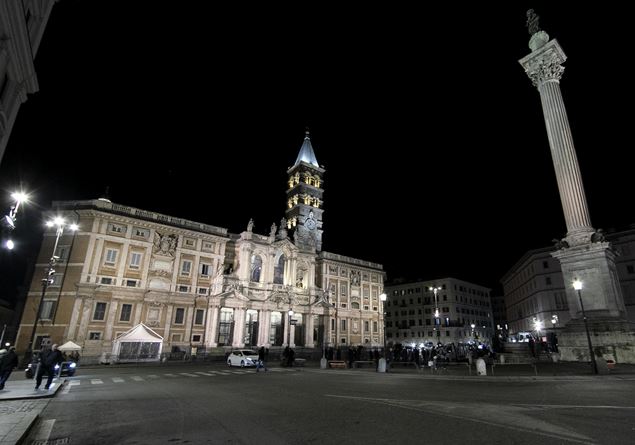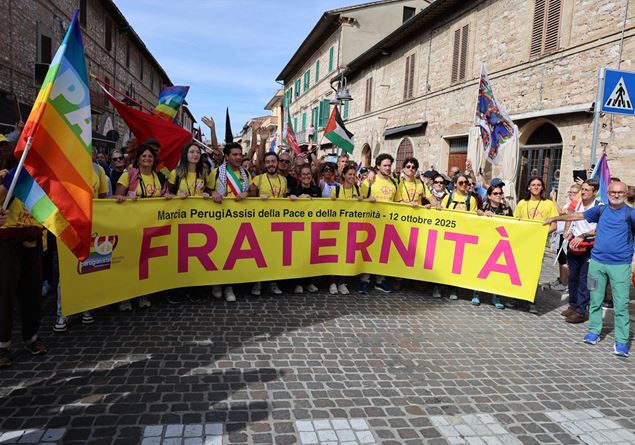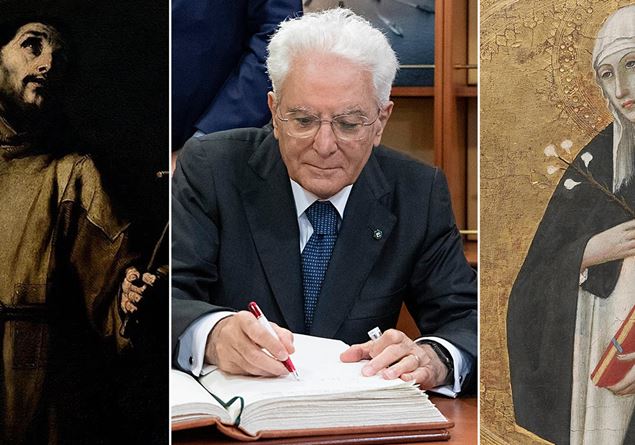The tradition tells that the Madonna wanted to indicate with an August snowfall the place to build ‘her home’, the basilica of Santa Maria Maggiore. For this reason for many years, the miracle has been replicated on the evening of August 5, when Romans and tourists from all over the world crowd the square to see the snow fall into the height of summer. In this archive photo of the Ansa news agency, the 2016 event
The Patriarchal Basilica major archpriest of Santa Maria Maggioresimply known by the name of “Basilica di Santa Maria Maggiore”, is one of the four papal basilicas of Rome. Located on the top of the Esquiline hill, it is the only one who has preserved the primitive early Christian structure, albeit enriched by subsequent additions.
Honorary Protocanon of the Basilica is by right the king of Spain. Considered the oldest Marian Sanctuary of the West, it was erected, on the previous Liberian building which was a pagan temple, from Pope Sixtus III (432-440) dedicating it to God and titling it to the Virgin, solemnly proclaimed by the Council of Ephesus (431) Mother of God.

The holy door
Being a papal basilica, here too there is the Holy door that the Pope opens on the occasion of each Jubilee.
The four papal basilicas of Rome have a holy door: San Pietro (work of the sculptor Vico Consorti), San Giovanni in Lateranor (work of the sculptor Floriano Bodini), Saint Paolo outside the walls (here the author of the Holy Door was Enrico Manfrini), and precisely Santa Maria Maggiore (Opera of the Bolognese sculptor Luigi Enzo Mattei, the only living among the artists authors of these Sante doors). This Santa Porta was blessed by John Paul II on 8 December 2001 and offered to the Basilica by the equestrian order of the Holy Sepulcher of Jerusalem.
Why was it built and when to celebrate the dedication of this basilica?
On August 5, the dedication of this basilica is celebrated. It tells a late legend that the Madonna, appearing on the same night of August 5 of 352 to Pope Liberio and a Roman patrician, would have invited them to build a church where they would find the snow in the morning. On the morning of August 6, a prodigious snowfall, covering the exact area of the building, would have confirmed the vision, inducing the pope and the rich patrician to put his hand to the construction of the first large Marian sanctuary, which took the name of S. Maria “ad nives”, of the snow.
Just under a century later, Pope Sixtus III, To remember the celebration of the Council of Ephesus (431) in which the divine motherhood of Mary had been proclaimed, reconstructed the Church in the current dimensions. The naves remain with the columns and thirty -six mosaics that adorn the upper nave.
Several popes contributed to the current structure of the Basilica, from Sixtus III who could offer “the” major “monument to the worship of the Blessed Virgin” to the people of God (to which we make a cult of hyperdulia, that is, more veneration to what we attribute to the other saints), up to the popes of our era.
The Basilica was also called S. Maria “in Praesepe”, even before the VI century, when the tables of an ancient manger were brought to it, which popular devotion identified with the one that welcomed the Child Jesus in the Bethlehem cave.
The liturgical celebration of the dedication of the basilica entered the Roman calendar only in the year 1568.
What are the other churches Mariana arose in Rome on pagan temples?
They are different. Few names are enough, among the hundred titles dedicated to the Virgin, to have the size of this tribute to the Mother of God: S. Maria Antiqua, obtained from the Patium Minervae in the Roman Forum; S. Maria dell’Aracoelion the highest top of the Capitol; S. Maria dei Martirithe Pantheon; S. Maria degli Angeli, obtained from Michelangelo from the “Tepidarium” of the Terme di Diocletian; S. Maria above Minervabuilt above the foundations of the Temple of Calcidica Minerva; And, larger than all, as the name says, S. Maria Maggiore, the fourth of the patriarchal basilicas of Rome, initially called Liberiana, because it is identified with an ancient pagan temple, on the top of the Esquiline, which Pope Liberio (352-366) adapted to the Christian Basilica.
Why is one of the bells called the “lost”?
The Romanesque bell tower of S. Maria Maggiore It is 75 meters high, the highest in Rome. Built between 1375-1376, it was, over the centuries, raised and completed under the Cardinal Guglielmo d’Estouteville, archpriest of the Basilica between 1445 and 1483, to which, for static purposes, the large cruise vault of division between the lower and the first floor must also be made. In the early nineteenth century he was equipped with a clock.
One of the bells is called “the lost” and plays just after 9 pm. With regard to a legend that dates back to the 16th century: that of the shepherdess (it seems blind) who had been lost in the meadows around the Aquiline, grazing his flock; It was now evening and the shepherdess did not return, the bells of the Basilica of Santa Maria Maggiore were playing because the rinses guided her at home. He then seems that he actually never returned again but the bells continue to call her. Hence the evening ritual said precisely of the “lost”.
Another similar story, set in the same period, tells that, instead of a shepherdess, a pilgrim had been lost (or a distinct traveler, according to other sources) who, coming to Rome on foot, had lost the way and therefore had recommended to the Virgin to be helped. He immediately heard the runters of the bell, following which he reached the Basilica of Santa Maria Maggiore And therefore salvation. In memory of the fact, the pilgrim left an annuity so that at 2 am (transformed at 9 in the evening in recent times) the bell was perpetually played.










